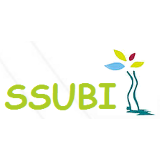Your Window to the World
Please note: the New York Times allows non-subscribers to read five articles a month for free
- Details
- Hits: 1435
Dear Visitor,
We have suspended our use of Twitter account due to the prevailing conditions on the platform wherein bellicose anti-democratic and racist organizations and individuals that spread hate, misinformation and political violence are given free unfettered reign. We will return to the platform when sensible community standards that embrace peace-seeking tolerance for others is adopted. We are not holding our breath. . .
The Worldview Project
- Details
- Hits: 2272
Our Recipe of the Month is for Cuban Picadillo Habanero, a national dish of the island nation. Sautéed meat mixed with a multicultural blend of ingredients, this is an easy-to-make dish that is very satisfying.
- Details
- Hits: 1801
Your Window to the World
Please note: the New York Times allows non-subscribers to read five articles a month for free
- Details
- Hits: 1603
Your Window to the World
Please note: the New York Times allows non-subscribers to read five articles a month for free
- Details
- Hits: 1838
Joomla!
Extensions
The Joomla! content management system lets you create webpages of various types using extensions. There are 5 basic types of extensions: components, modules, templates, languages, and plugins. Your website includes the extensions you need to create a basic website in English, but thousands of additional extensions of all types are available. The Joomla! Extensions Directory is the largest directory of Joomla extensions.
Components
Components are larger extensions that produce the major content for your site. Each component has one or more "views" that control how content is displayed. In the Joomla administrator there are additional extensions such as Menus, Redirection, and the extension managers.
Modules
Modules are small blocks of content that can be displayed in positions on a web page. The menus on this site are displayed in modules. The core of Joomla! includes 24 separate modules ranging from login to search to random images. Each module has a name that starts mod_ but when it displays it has a title. In the descriptions in this section, the titles are the same as the names.
Content Modules
Content modules display article and other information from the content component.
User Modules
User modules interact with the user system, allowing users to login, show who is logged-in, and showing the most recently registered users.
Display Modules
These modules display information from components other than content and user. These include weblinks, news feeds and the media manager.
Utility Modules
Utility modules provide useful functionality such as search, syndication and statistics.
Navigation Modules
Navigation modules help your visitors move through your site and find what they need.
Menus provide your site with structure and help your visitors navigate your site. Although they are all based on the same menu module, the variety of ways menus are used in the sample data show how flexible this module is.
A menu can range from extremely simple (for example the top menu or the menu for the Australian Parks sample site) to extremely complex (for example the About Joomla! menu with its many levels). They can also be used for other types of presentation such as the site map linked from the "This Site" menu.
Breadcrumbs provide users with information about where they are in a site.
Page 8 of 28










